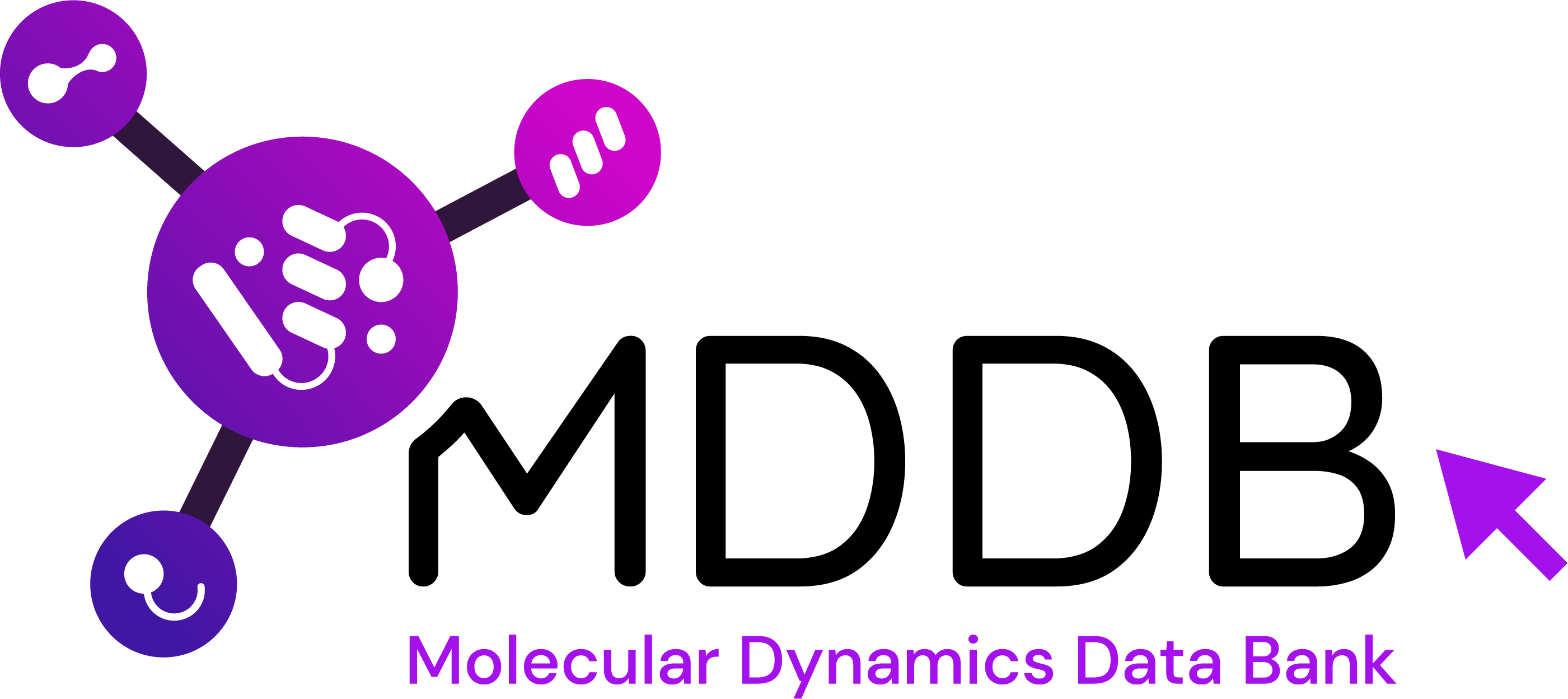MDDB webinar series: “DynaRepo and beyond: Computational tools to decode dynamics and interactions in macromolecular complexes
27 May 2025 | 13:00-14:00 CEST
Yasaman Karami and Hamed Khakzad from Inria, University of Lorraine and Roy Gonzalez-Aleman, from LPCT, University of Lorraine, France
 Join the webinar here: https://epfl.zoom.us/j/64118280662?pwd=QoAJOwh8Jihr4ahKoNoYvpiQ6LtbEq.1
Join the webinar here: https://epfl.zoom.us/j/64118280662?pwd=QoAJOwh8Jihr4ahKoNoYvpiQ6LtbEq.1
The Molecular Dynamics Data Bank (MDDB) project is an European-scale repository for biosimulation data, which harnesses decades of cutting-edge computational resources to build a unified database that compiles and organises all data generated by molecular dynamics (MD) simulations.
MDDB is a collaborative initiative, bringing together some of Europe’s leading institutions to transform the handling of MD data and facilitate its sharing within the scientific community. The partners involved in this exciting project are IRB Barcelona, Barcelona Supercomputing Center, their joint spin-off Nostrum Biodiscovery, along with the Royal Institute of Technology (KTH), the European Molecular Biology Laboratory, the University of Oxford, and CECAM (EPFL).
If you would like to learn more about MDDB, please visit the project’s website.
With this series of webinars, MDDB aims to engage the MD community and discuss the importance of data sharing, the methodological and technological issues involved, and present how they are addressing these challenges, with examples taken from recent projects such as the Covid19-related MD simulations database.
In this fifth instalment of the MDDB webinar series, titled "DynaRepo and Beyond: Computational Tools to Decode Dynamics and Interactions in Macromolecular Complexes", Yasaman Karami and Hamed Khakzad, from Inria, University of Lorraine together with Roy Gonzalez-Aleman, from LPCT, University of Lorraine, France, will present DynaRepo, a repository of macromolecular conformational dynamics for a large set of macromolecular complexes, carefully selected from PDBind and ASBench datasets. The speakers will demonstrate how this data has been used to elucidate communication networks and allosteric signaling [1], and predict binding sites across macromolecular complexes [2]. They will also explain how DynaRepo is connected to and complements MDDB.
[1] S. Bheemireddy#, R. González-Alemán#, E. Bignon, Y. Karami, bioRxiv, doi: https://doi.org/10.1101/2025.02.14.638259
[2] O. Mokhtari, S. Grudinin, Y. Karami*, H. Khakzad*, bioRxiv, doi: https://doi.org/10.1101/2025.03.04.641377

 About
About
